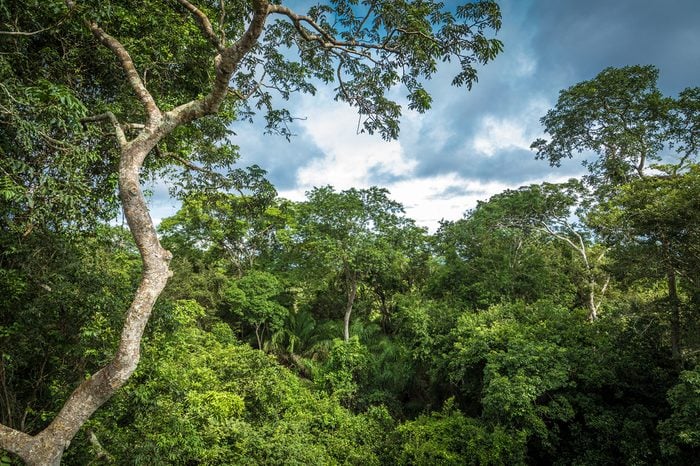
Layers of rainforest
The Amazon rainforest is the most biodiverse region on Earth. There are thousands of tree species, most of which grow to between 80 and 100 feet tall, developing huge networks of branches that make up the canopy layer. A few trees grow even taller and poke up above the canopy, forming the emergent layer—small flying and gliding animals like birds, bats, and butterflies are good at maneuvering from tree to tree up where it’s windy. Below the main tree canopy, the understory layer is darker and stiller. Plants growing there often have extravagant, very fragrant flowers in order to attract pollinators without a lot of light. The forest floor layer is even darker, and few plants grow there.
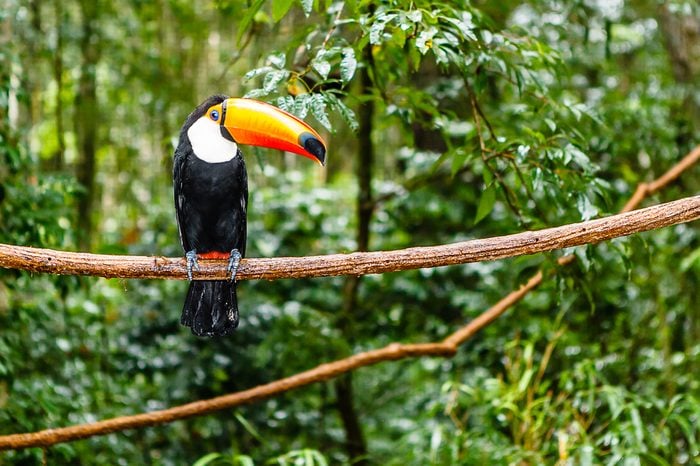
Tree canopy
The most active part of the rainforest is the canopy layer, which is the 20 or so feet of treetops that essentially form the roof of the ecosystem 80 feet above the ground. More animals live in the canopy than in any other layer—birds including macaws and toucans, monkeys, spiders, sloths, and hundreds of thousands of insects— that eat the fruits and leaves of trees and sleep in the branches. If you’re a fan of this picture, take a look at these photos of the world’s most beautiful trees.
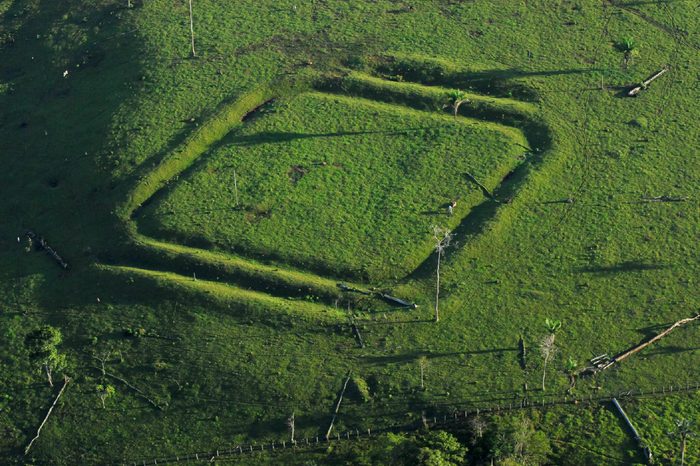
Geoglyphs
Although there are places in the Amazon where the tree canopy is so thick that no light reaches the ground, there are other spots where humans (and there are a lot of them there) are farming, ranching, and engaging in other activities that change the landscape. Clear-cutting in recent years has revealed evidence of land use by earlier groups as well: 2,000-year-old huge geometric earthworks form squares and circles that stretch as far as a city block. Some trenches are 12 feet wide and 13 feet deep. Researchers aren’t sure what the geoglyphs were used for, but a recent study in The Proceedings of the National Academy of Sciences found that ancient humans actively managed the forest using sustainable practices. “New estimates for the population of Amazonia in pre-colonial times range between 6 and 10 million people, which is many more than today,” says Jennifer Watling, an archaeologist who led the study. “These people had many ingenious ways of making the forest more productive without damaging it for future generations.”

Percy Fawcett
If you saw the 2016 movie The Lost City of Z, you know about Percival Fawcett, the intrepid British explorer of Amazonia who vanished (with his son and another team member) in 1925 during one of his expeditions. His story made for great tabloid fodder in its day, and although he almost certainly perished in the Amazon through accident, illness, or at the hand of an indigenous tribe he’d insulted (writer and explorer Hugh Thomson wrote in the Washington Post that Fawcett was said to have stolen canoes and refused to share game on occasion) numerous expeditions were sent to look for him, and occasional reports of a white man in the rainforest would revive the story for decades.
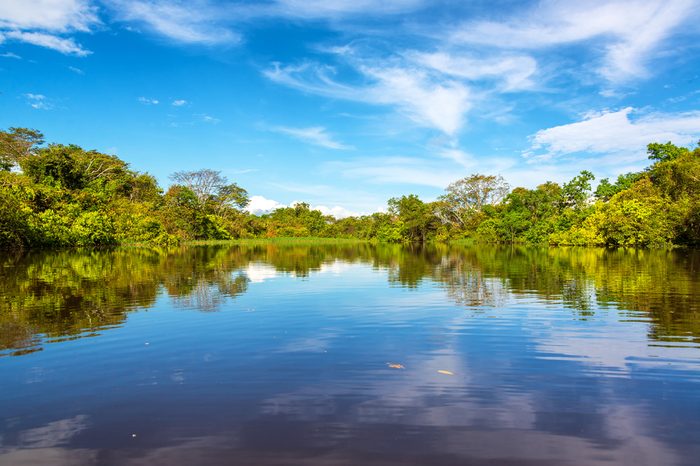
Maricoxi
Although Fawcett lacked manners when it came to his interactions with local tribes, he had a great sense of what contemporary newspaper readers back home in England wanted, and he seems to have spun some wild stories to help him garner funding for more adventures. One of his tales was about the Maricoxi, a sasquatch-like tribe of very hairy creatures that threatened his party with bows and arrows but could only grunt. Read about some of the strangest unsolved mysteries of all time.
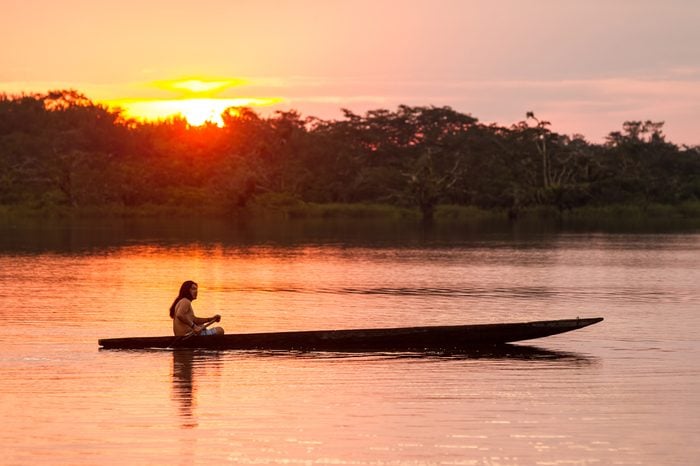
Isolated tribes
About a million indigenous people live in the Amazon rainforest. There are around 400 tribes, most of which have had contact with outsiders for hundreds of years. They hunt, fish, and farm, and have access to Western medicine and education. But a dwindling number of tribal people have remained isolated. Although they’re often referred to as “uncontacted,” most isolated tribes actually know about outsiders and choose to keep their distance. That’s because most of the contact they’ve had has been extremely destructive: loggers, miners, and ranchers have killed and enslaved indigenous people in the region and isolated tribes still have little immunity to the diseases outsiders can introduce. In July 2018, Brazilian authorities managed to take a picture of a man known as the “indigenous man in the hole,” who is the sole survivor of a tribe whose other members were killed by farmers in 1995—he has rejected outside visitors, though the government leaves him seeds and tools.
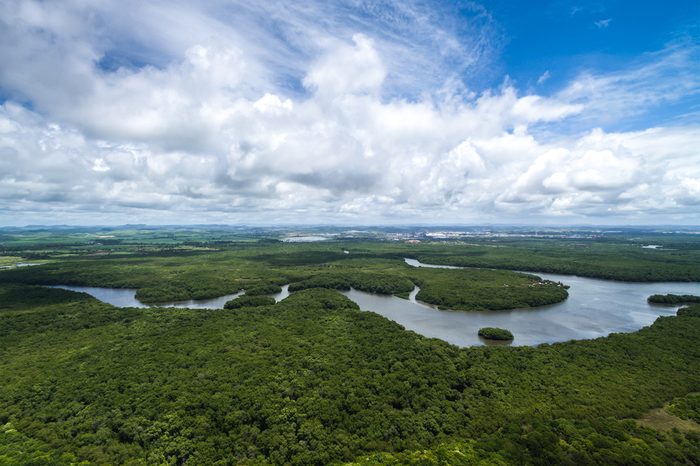
Mapinguary
Many different tribes—even those that don’t communicate with one another—talk about a giant rainforest animal that they describe as either “roaring” or “fetid.” The accounts are so numerous that researchers have mounted expeditions to try to track down a 7-foot-tall beast with a stench so strong it can make hunters dizzy and disoriented. Although no bones or scat samples have turned up, some scientists think the descriptions of mapinguary might be based on passed-down stories of a time when humans in the Amazon interacted with the last giant ground sloths—possibly 10,000 years ago, when the creatures are thought to have gone extinct (or maybe more recently, if that date is found to be wrong). “We know that extinct species can survive as legends for hundreds of years,” David Oren, a former director of research at the Goeldi Institute in Belém, Brazil, told The New York Times in 2007. “But whether such an animal still exists or not is another question, one we can’t answer yet.”
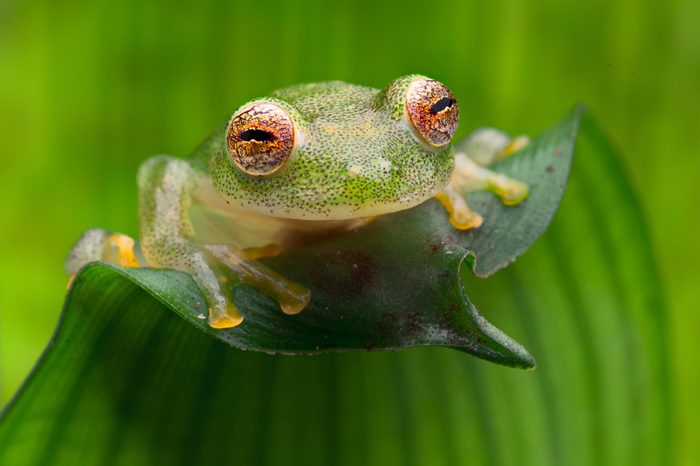
Biodiversity
A new species of plant or animal was discovered in the Amazon rainforest every three days, on average, between 1999 and 2009, according to a WWF report. They included a bald parrot, a tiny blind catfish, and a translucent frog, with skin so thin you can see its heartbeat. In fact, 1 out of every 10 known species lives in the Amazon. Read these facts about Earth that you didn’t learn in school.
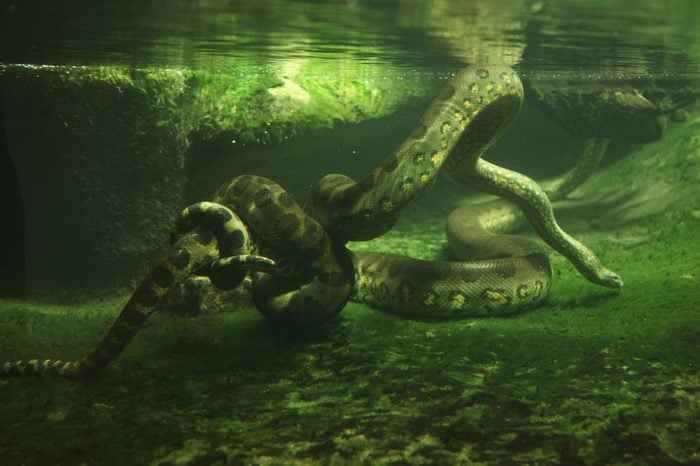
Giant snakes
The biggest snake in the world is the green anaconda, which lives in the Amazon’s swamps and streams. Growing as long as 29 feet and weighing up to 550 pounds, anacondas beat out their main competition for the title, the reticulated python (native to South and Southeast Asia), which can grow slightly longer but tend to be much more slender. The anaconda spends most of its time in water; its eyes and nasal openings are located on top of its head to allow it to watch for prey while almost completely underwater. They catch wild pigs, birds, and even jaguars, squeeze them until they suffocate, and swallow their prey whole. Anacondas can go months without food after a big kill.
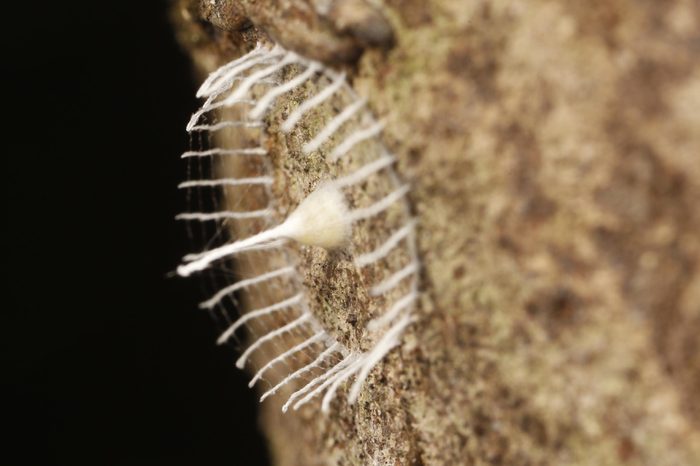
Silkhenge
Weird wildlife in the Amazon isn’t always huge—over the past decade, scientists have been trying to figure out what is building tiny silk structures in Tambopata, Peru. Each has a ring of pillars connected by horizontal threads, forming a fence; in the middle is a cone. After collecting and observing numerous specimens, researchers finally started seeing spiders hatch out of the structure in the middle. Knowing the builders are spiders is enlightening, but scientists still aren’t sure what species they are, because no clear adult owners of the silkhenge structures were observed. No other spider has ever been observed laying only a single egg in an egg sac—in fact, most spiders keep a bundle of eggs on their own webs to protect until they hatch.
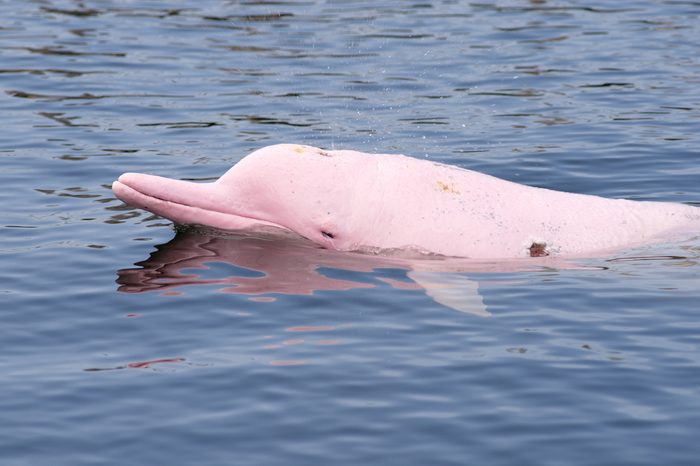
Pink dolphins
Pink dolphins, whose official name is the Amazon river dolphin, can be found through the Amazon river basins in Peru, Bolivia, Brazil, Colombia, Ecuador, Guyana, and Venezuela. These creatures can only be found in freshwater and the population is estimated to be in the tens of thousands. For a bucket list experience, take a Delfin Amazon Cruise and you may get the chance to swim next to these magical creatures. Learn about the ocean mysteries scientists still can’t explain.
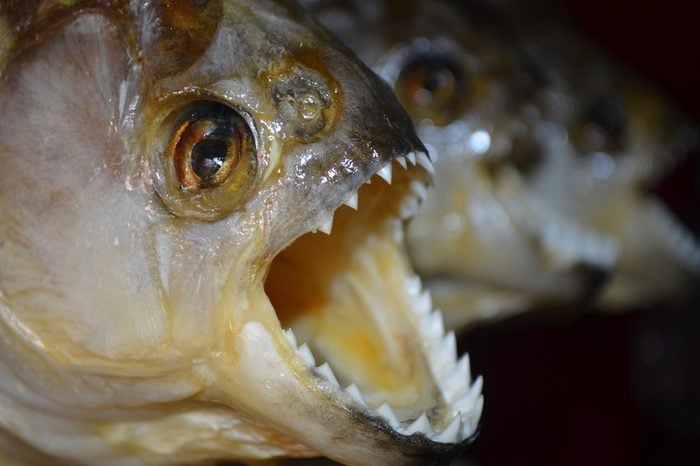
Piranhas
According to National Geographic red-bellied piranhas, found in lakes and rivers throughout South America, including the Amazon, are not man-eaters. It’s extremely rare for these sharp-teeth creatures to go after humans. Instead, these fish travel in groups (there can be up to 100 of them in a school) in order to be efficient hunters. They eat mainly shrimp, worms, and mollusks.
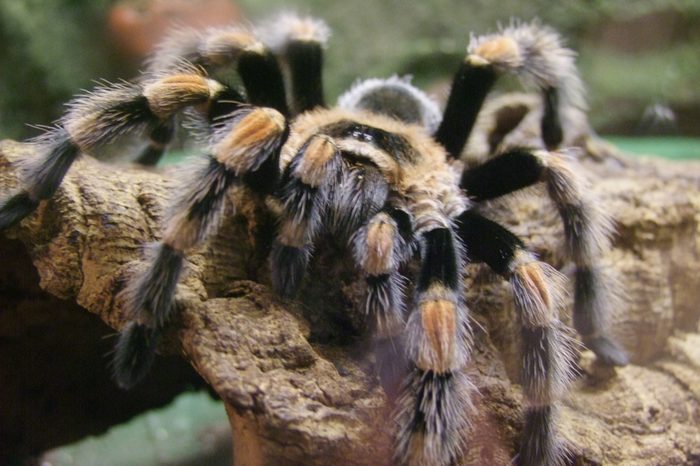
Tarantulas
These scary-looking spiders may seem like their poison can take down a human, but the reality is a bite from one is not all that different than a bee sting. They mainly hunt at night and like to dine on insects, but are also known to eat frogs and mice, too. The way they eat their prey, however, is unusual: tarantulas use their legs to hold down their target then they inject it with paralyzing venom—finally, they bite the prey with their fangs and suck up the bodies through their mouth. Don’t miss 14 of the most impressive spider webs found in nature.
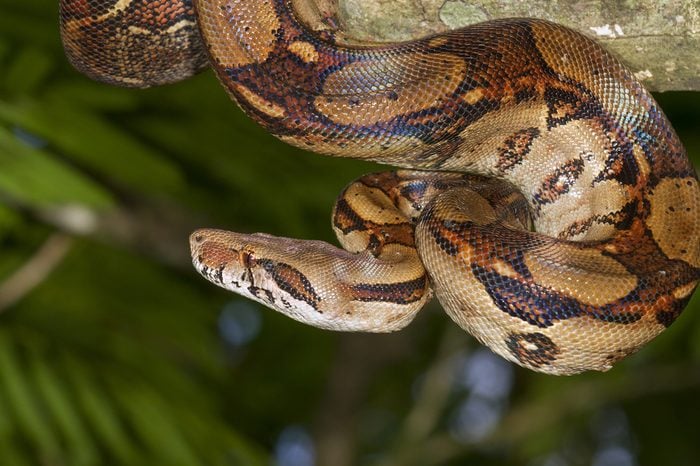
Boa constrictors
While boas are often made out to be the villain, these slithering snakes don’t actually break the bones of their prey by crushing them. Instead, they wrap their body’s around their target so the victim’s lungs can’t expand and the prey suffocates. But don’t worry, they usually hide in the trees of the Amazon where they hunt for rodents, birds, lizards, frogs, and monkeys.
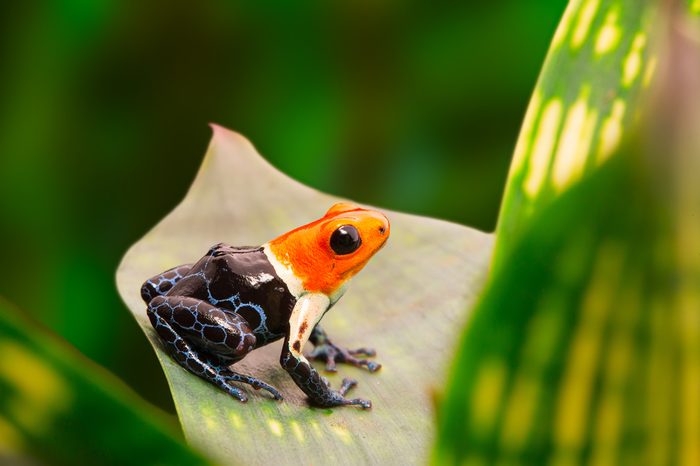
Poison dart frogs
While most animals camouflage themselves to blend into their surroundings, the poison dart frog is brightly colored to warn off would-be predators. Their bright hues—ranging from blue, red, yellow, and green—make these tiny creatures a sought-after sighting in the Amazon. But don’t be fooled by its beauty: their skin secretes a poison that can paralyze—and in some cases—kill its prey. Poison dart frogs are endangered by climate change and a shrinking habitat. Read about more of the biggest unsolved mysteries about planet Earth.
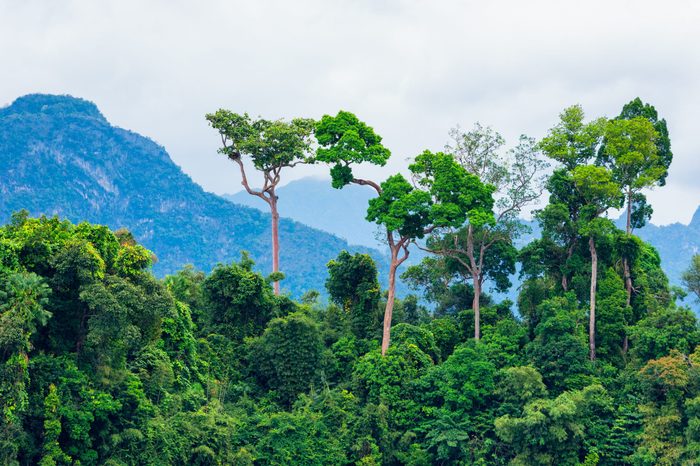
The name Amazon
The Amazon region got its name from a Spanish soldier named Francisco de Orellana. In 1541, de Orellana was the first European to explore the area and reached the mouth of the river in 1542, according to Britannica. He returned to Spain with tales of the gold and cinnamon he found there. But he was also attacked by tribeswomen who were protecting their territory. They were so fierce he called them Amazons, a reference to female warriors in Greek mythology and the name stuck.
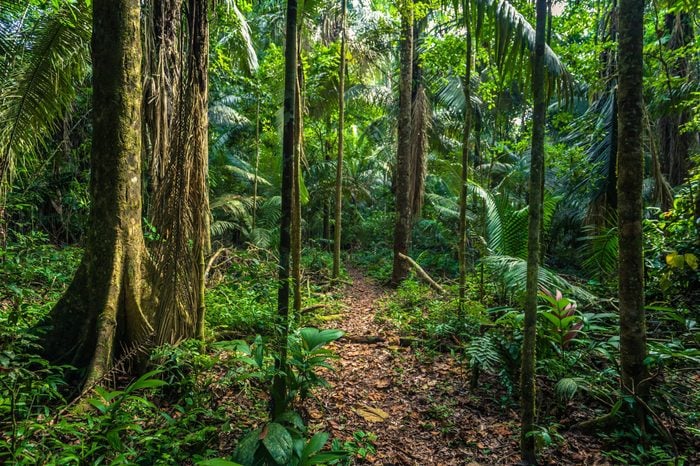
The shrinking rainforest
The Amazon has lost 17 percent of its rainforest over the past five decades, according to the World Wildlife Fund. Converting the forest into land to raise cattle is the top reason for the decline in the rain forest. Deforestation is more common in areas where more people live, but it’s also on the rise in more remote areas after the discovery of natural resources such as gold and oil.
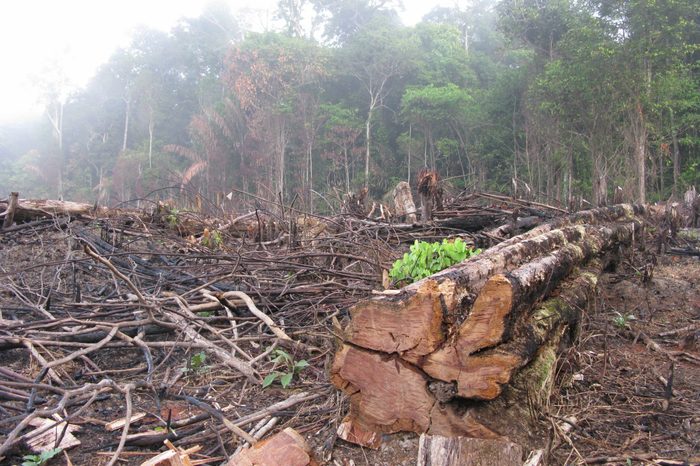
The rise in forest fires
Residents of Brazil’s capital, Sao Paulo, have been breathing in black smoke due to widespread wildfires in the Amazon region. In 2019, forest fires were up 84 percent from the year before—a record number, the Washington Post reported. Why? Wildfires are common during the dry season, and farmers have also been clearing land in the rainforest for agricultural purposes.
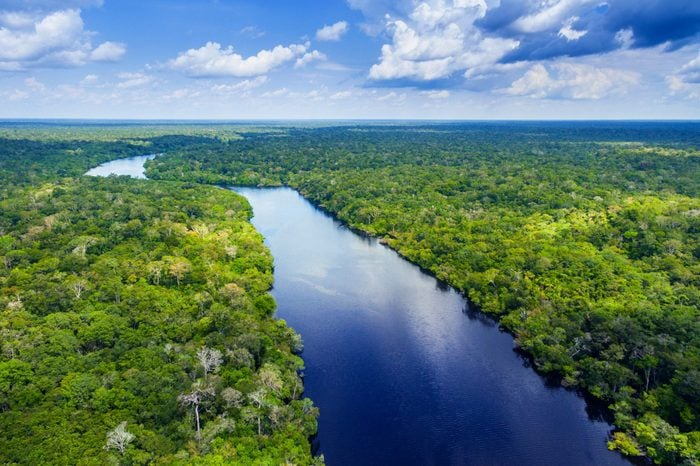
The swimmability of the Amazon River?
Sure, the prospects of piranhas and parasites were intimidating, but it didn’t stop a Slovenian man from becoming the first person to swim the entire length of the Amazon River in 2007, Time reported. It took Martin Strel 66 days to accomplish the nearly 3,300-mile journey. He was 50 at the time and his diet included daily consumption of Slovenian wine.
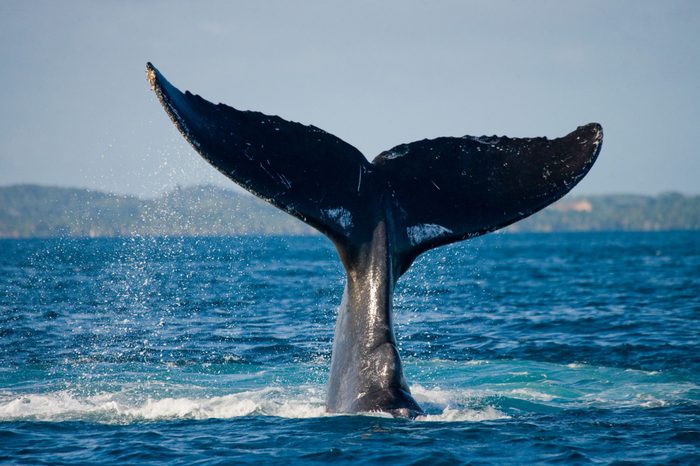
The wayward humpback whale
Scientists were baffled in February 2019 when a dead humpback whale was discovered near the mouth of the Amazon River. The whales typically migrate back and forth between the poles, according to the New York Times. But this whale was about 4,000 miles from its expected feeding grounds. The scientists hypothesized that the whale may have gotten separated from its mother. Now, find out some weird facts most people don’t know.
